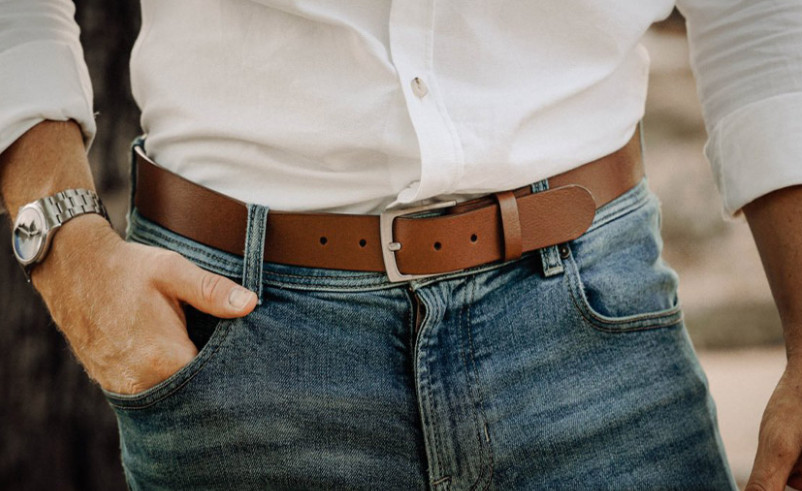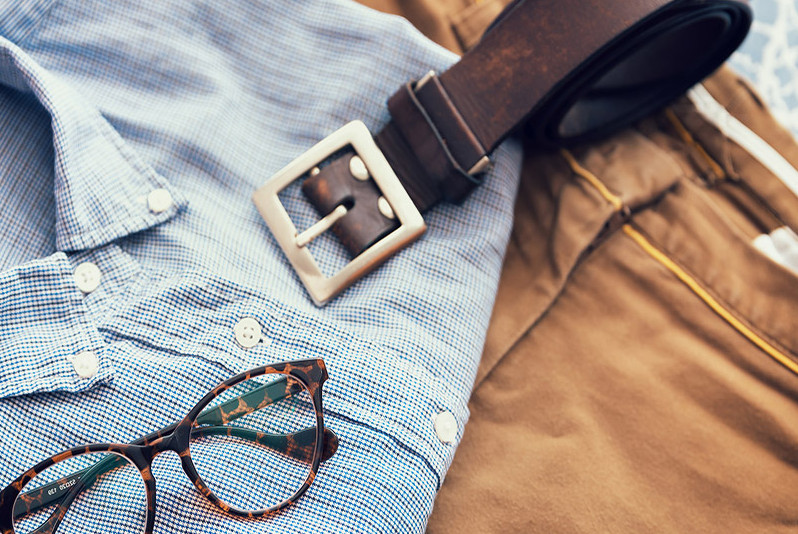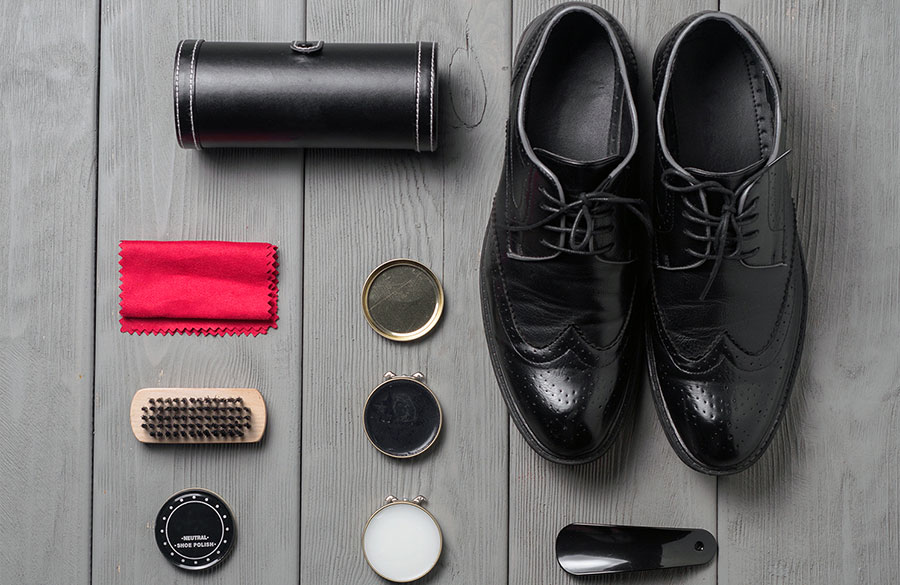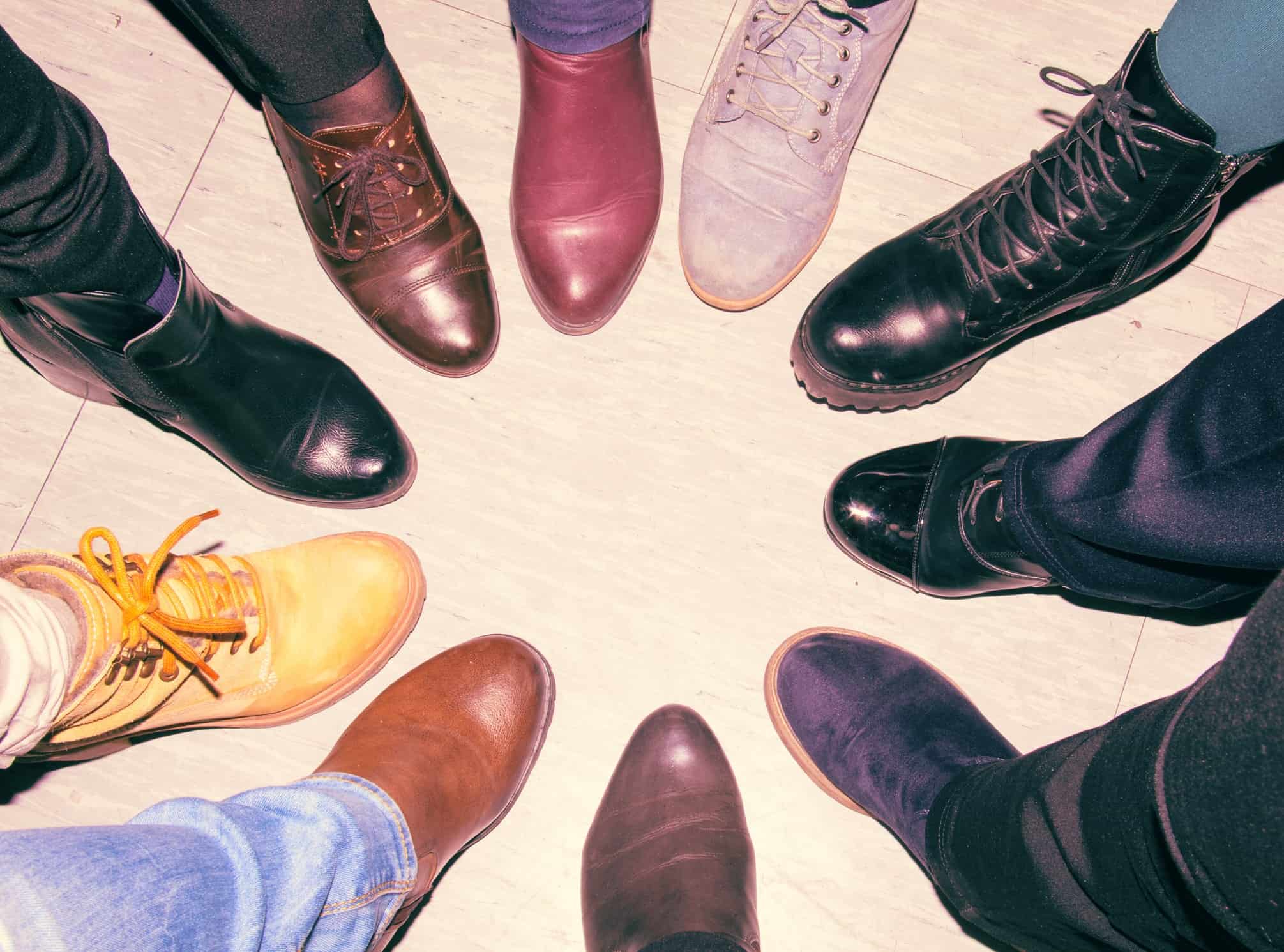men’s belt guide: The complete guide to buying a men’s belt
men’s belt guide – The complete guide to buying a men’s belt : Most men own at least one black or brown belt. However, most people do not realize that this accessory can make a significant difference in style. The right belt complements the right outfit. Additionally, it is a classic men’s accessory and a symbol of a well-dressed gentleman. Inadvertently drawing attention to the abdomen with an inappropriate belt can cause discomfort and embarrassment.
What is a belt?
Belts are simple devices that hold pants on. But most belts are quite showy.
Many belts have buckles and straps. On many fabric belts, there is also a ring or retaining clip at the end (the end clip is often made of metal or leather). The belt end clip protects the belt end and can be used to make it easier to fasten. The retaining ring prevents the strap from moving after it is fastened.
On some straps, the buckle and strap are completely connected, while on others, they can be separated.
The most common leather used to make belts is cowhide, and it comes in a variety of types:
Whole grain leather looks the best and is the most durable. On the other hand, calf skin is the softest and most flexible. The best formal belts are made from whole calfskin.
Adjustable belts are made from woven leather with frame buckles. Multi-colored leather leathers are appropriate for summer casual wear, while monochrome leather leathers suit very informal suits as well as sportswear.
A patterned leather is decorated with special tools that hack various patterns into the leather. Belts like this one pair well with simple styles such as jeans and button-down shirts.

men’s belt – Suede:
Suede is also often used for informal belts. Although it is less durable than all-grain leather, whole-grain leather is used with them for longer durability.
men’s belt – Rare animal skins:
Skins from rare animals are informal, but can be formalized in colors such as black. An ostrich leather belt has a prominent and dotted appearance and is expensive. Crocodile, crocodile, and lizard leather belts have special patterns and textures.
Belts can be categorized into formal and informal belts.
There are formal and informal belt styles, but there is some overlap between the two. For example, formal belts can be worn with suits and formal clothing. However, informal belts can be worn with anything, including jeans and shorts.
Formal belts are usually worn with formal suits and formal clothes. A comfort belt is wider and can be worn with jeans, shorts, and many other types of clothing.
In this article, we will discuss the characteristics of each belt and the factors you should consider when choosing a men’s belt.
Official belt
men’s belt When buying a formal belt, keep in mind that the belt should complement the accompanying shoes as much as possible. The belt should be made of the same material as the shoe, but this is very rare, so instead of focusing on it, adjust the color of the shoe and belt.
Width:
Ideally, the official strap should be 2.5 to 3 cm wide and 0.3 cm thick. The belts that are wider than this are considered informal and are not suitable for formal occasions.

Buckle:
A belt buckle should be shiny and simple with no extra styling. It should also have only one rake. Additionally, the polished gold color goes well with the brown or light brown belts, and the polished silver color with the black or crimson belts.
The official specifications of the belt in brief
Width 2.5 to 3 cm
Thickness about 0.2 cm
Black or dark brown leather
Often glossy
No embellishments (can be slightly shiny or glossy by hand drawing)
Small, simple, with polished buckles, often framed
Leathers are set together and metals are set together.
Informal belts:
The flexibility of informal belts varies depending on the requirements of the rules. So you can use the belt in different situations or have a variety of belts with the same style.
Width:
The width of informal belts varies from 3.2 to 4.5 cm, and they are usually wider than formal belts. Jeans are usually worn with 3.8 cm wide belts. In addition, they can be 4.5 to 8.5 cm thicker than formal belts.
Gender:
Informally, belts are made of leather, and as we mentioned in the official belts section, you should choose full-grain leather for your belt. Even informal belts should have this feature since most people wear them daily and they break easily unless they are fully leather.
Another common informal belt material is suede. Durability Suede is not as durable as granulated leather, but leather liners are often used for greater durability and strength.
Linoleum is the least popular material for informal belts. Among the other three models, this is the most economical and informal. The unique thing about linen belts is that they can be buckled with a standard D-ring.
Briefly, here are the belt specifications:
Strap width is approximately 3 to 4.5 cm
The belt may be thicker than the official belt.
It comes in a natural brown leather.
It has a matte and uneven appearance and can be decorated, textured and patterned.
Its buckle can be larger and play a larger role.
No need to set it precisely with other light leathers (light brown can be set and light brown can be set with white).
A summer fabric belt that can be worn casually.

Its width is about 4 cm or more.
The color of the strap should match the wardrobe clothes.
The strap is patterned.
Covered with linen pants or shorts.
If your leather or suede belt gets dirty, use a soft cloth and warm water to try to remove the stain. Using a small amount of leather cleaner with the cloth may be necessary if the stain cannot be removed with water. To replace the leather oil that has been removed by the cleaner, use a leather softener after the stain has been removed. Pour the emollient on a clean, soft cloth and apply it. After that, let it sit on the leather for 15-30 minutes to absorb.
Belts suitable for formal occasions
Leather is the only material suitable for formal belts. The most formal colors of leather are black and brown. The leather of the belt, the shoes, and the metal should be in harmony with the style when you wear a formal belt. Like shoes and other leather accessories, the belt should be stylish not only in terms of color, but also in terms of radiance. The metal buckle should be in keeping with all metal accessories.
Belt suitable for informal situations
You still have to mix metals together for informal occasions, but with leather you have more freedom. Combine brown with tan or brown with white.
Which belt should we wear with jeans? In an emergency, you can wear a formal belt with jeans. This combination is not recommended. Formal belt leather is often shiny and glossy, while regular belt leather is matte and uneven. The leather of informal belts is also wider, stronger, and more durable than the leather of formal belts. The larger the buckle, the less formal the belt. Formal belts usually have small frames. Informal belts can use any buckle that matches the dress.
How to buy a quality belt?
Don’t buy cheap leather. It cracks easily and looks unsightly.
The signs of a quality belt are:
The best and most expensive belts are made of calfskin, which is a flexible and soft leather that does not crack.
When you can’t make a visible scratch on the leather with your nails, the leather is soft and fresh.
A good piece of leather has good stitching. The stitching should be small, compact, and without loose ends.
Belt buckles should be good, sturdy, and replaceable.
Invest in a formal belt you can wear at work. Then look for casual leather and fabric belts.
Belt size selection guide for men:
You need to determine your belt size after selecting a style and finding a quality belt. Men’s belts should be 2.5 to 5 cm larger than the waist of their pants. If your pants have a waist size of 102 cm, you should choose a belt with a circumference of 105 or 107 cm.
Make sure the belt fits your waist by wrapping it around your waist and trying it on. You can also specify the size of the new belt based on the old belt. Choose the size that is closest to the area where you always attach the buckle to the leather strap.
Never cut your belt with a pocket knife or kitchen knife if the size of your favorite belt has changed or if your waistline has changed. This hole is marked on the belt and will cause the belt to break. The job should be done by someone with the right tools.
Formal belts should have short ends. When closing the buckle, you only need a few inches of leather on the left side. It should pass through the first loop of the belt or, if present, through the loop on the belt itself.
What is the best width for a men’s belt?
Wide belts are generally considered informal. Belts should be between 3 and 4 cm wide. In case you have a slim waist (less than 86 cm) or wear tight pants, you should choose a belt with a width of about 4 cm. You should not choose belts less than 3 cm wide as you will enter the range of women’s belts.
Conversely, informal belts can be wider, often between 4 and 5 cm wide. Wide belts are great for jeans.
When not to wear a seat belt?
It is not necessary to wear a belt if your waist does not have a belt loop. You should wear a belt with all pants that have a belt loop. It makes you look slutty if you don’t wear a belt. As long as your pants are appropriate, it is better to remove the belt from your style if your style is crowded or you do not have a belt to match your style.


